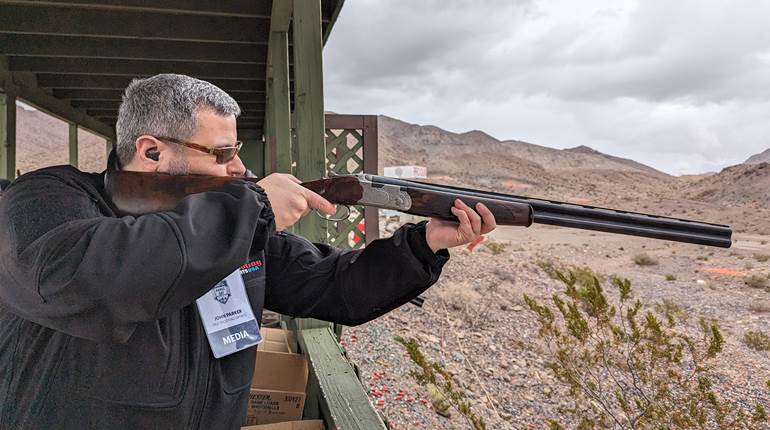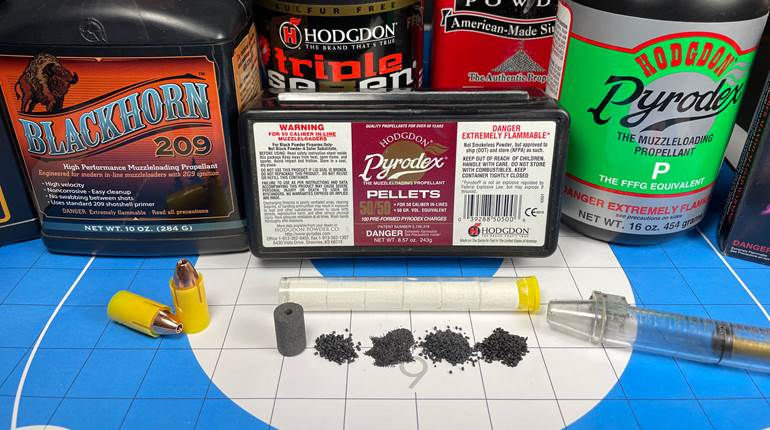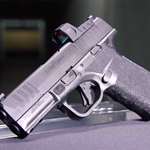
Since Mossberg’s 1988 introduction of the Model 835 Ulti-Mag, the first 31/2-inch-chambered 12-gauge shotgun, many customers have demanded that new models handle that lengthiest of 12-gauge options. In an effort to make sales, companies complied with the request.
The problem is, unlike pump-action shotguns, such as the Ulti-Mag, Browning BPS or Remington Model 870 Express Super Mag, which pose few design problems for handling 23/4, 3 and 31/2-inch shotshells interchangeably, the same cannot be said for semi-automatics. Operating on propellant gases or kinetic energy rather than human strength, reliable functioning through widely varying intensity levels in loads spanning the 12-gauge spectrum creates a difficult engineering challenge, especially with low-power 23/4-inch shells. For most 31/2-inch-chambered semi-automatics, the lightest loads that function reliably typically contain 11⁄8 ounces of shot. Browning’s flagship autoloader, the Gold, is no different. What about the overwhelming 1-ounce options? Such was a key motive for Browning making the new Maxus, which Browning liaisons report as meaning “the maximum,” “the ultimate,” “nothing exceeds it,” “superior,” and “the best.”
But, the company didn’t stop there. It completely overhauled the Gold design, and in doing so gave the Maxus a laundry list of worthwhile features—not to mention a look all its own. As such, the Maxus is, in terms of reliability, appearance and performance, a step apart from its brethren, as well as the competition.
Short-Stroke—Basic Operation
Like Browning’s Gold shotgun, which debuted in 1994, the Maxus uses a gas-operated, short-stroke piston system, albeit with several notable upgrades.
Immediately after the wad’s gas seal passes the dual ports, which are located side-by-side in the bottom of the barrel, high-pressure propellant gases flow through the ports and the gas bracket and push the piston rearward, forcing the piston sleeve and operating rod—the latter of which is located on the left side, as opposed to the right side on the Gold—backward. Energy from the operating rod is transferred to the bolt carrier, which, moving rearward, forces the lug—at the back of the bolt—to disengage from its seat in the barrel extension.
As the bolt carrier retracts, the bolt’s cross pin and an angled cutout in the carrier force the bolt’s “hook”—on the bottom, rear—to drop into a corresponding recess in the carrier. The hook comes to rest against a separate, spring-loaded—no doubt to reduce wear—piece of steel possessing an identical angle, which forces the bolt and bolt carrier to move rearward in unison. As the bolt assembly retracts, the extractor, previously at rest in a large, rounded cutout in the barrel, extracts the hull. The hull continues moving rearward with the bolt assembly until contacting the spring-loaded ejector in the barrel extension’s left side, opposite the extractor, at which point the hull is ejected through the ejection port. During this process, the hammer is cocked.
During rearward movement of the bolt assembly, the link, located on the rear of the bolt carrier, compresses the recoil spring in the buttstock. After reaching its full rearward travel, the recoil spring rebounds, forcing the bolt assembly forward, where it chambers an awaiting shotshell and completes lockup. A short coil spring around the magazine tube serves as a return spring for the piston assembly....






































